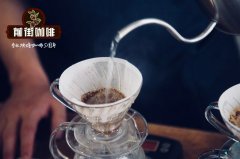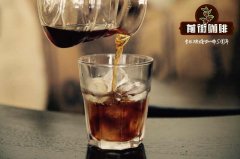Do Chilean Coffee recommend Chilean hand Coffee? how to solve the problem of insufficient extraction of hand Coffee?

Professional coffee knowledge exchange more coffee bean information please follow the coffee workshop (Wechat official account cafe_style)
This is a pea from Al Haima Mountain. Its growers have produced only 210kg, of which 51kg are our impressive peas. This coffee is so strong that anything I know about degassing is out of date. This coffee is so slow that it has been roasted for more than a month, and it tastes as sparkling as it was baked four days ago.
This coffee has an impressive aroma, with many black cherries and drupes. This is coffee, but psychics are very strong. I've tried several ways, but problems keep popping up. As far as I know, coffee volatiles are fragile and oxidizing. As the date of the game approached, I made no progress, and it wasn't until my 2019 Patrik routine, when he was grinding coffee a few hours before the show, that I debunked my own wall about coffee grinding and volatile loss. I set the open service to be ground 3 hours before, in order to get rid of the intense degassing of coffee, then use a kruve sieve to separate any coffee particles more than 1000 microns to further reduce any possible cause of channeling (larger particles create concentrated areas to increase water flow, most of which distribute less than 800um) and get rid of silver parts, which are based on the use of water, baristas hustle and bustle water with a lower formula buffer. To avoid muddy complex coffee acidity, and the temperature is set at 88 °C, the temperature is lower than the way I normally use it, but at the point I am looking for the tactile feeling, an incredibly soft and 10-minute aftertaste. Because I grind it very fine, it's not a problem to have my tooth extracted. In my worst extraction, my best extraction was more than 20%, 21.5%, and 1.65 TDS. I am looking for a higher intensity mainly because the aroma is so incredible that any aroma cup brewed below 1.4 TDS feels that the taste is not at the same level, the coffee itself is so sweet that it only gets a higher extraction hit a sweet to ridiculous level.
This method is also a problem. I can't get a uniform grinding cup with a regular V60, and any blockage in Karita can lead to convergence. April Brewer is an impossible choice, so I imitated a glass V60 (glass also loses a lot of hot beer and requires a lot of energy heat, so a lot of heat is absorbed and cools quickly because I brew) kalita 185filter (I think flat bottom geometry has the best coffee, but also helps me get more uniform beer). With this setting, I got the best unrestricted flow, the V60 provides a sweeter and more rounded body, a flat-bottomed way to provide. This method of low-temperature brewing, long grinding and mixing is usually incomprehensible to me, but experiments, feedback and research on different brewing methods have opened my mind in an unprecedented way.
Because I am now preparing the World Brewer Cup, I can make it with a new method and an open mind, which is difficult for me to experience because the Chilean specialty coffee community is too small. The biggest lesson I have learned from this experience is that no knowledge is useless, coffee can have so many strange ways of expression, and there are no rules that apply to all coffee.
END
Important Notice :
前街咖啡 FrontStreet Coffee has moved to new addredd:
FrontStreet Coffee Address: 315,Donghua East Road,GuangZhou
Tel:020 38364473
- Prev

Main Coffee producing areas in Africa | A brief introduction to the influence of Climate on Coffee varieties and flavors in Kenya
Professional coffee knowledge exchange more coffee bean information please follow the coffee workshop (Wechat official account cafe_style) front street-African coffee producing area brief introduction to Kenya coffee growing conditions Kenya KENYA located in East Africa "Kenya" is one of the major coffee producing countries, about 6 million people are engaged in the coffee industry, mostly in the form of a combination of small farmers, wet treatment plants and cooperatives
- Next

Essel Special treatment of Coffee beans Essel cm treatment of Coffee beans Essel CM treatment of Bean hand Flavor
For more information on coffee beans, please follow the Coffee Workshop (Wechat official account cafe_style) Ethiopia Jasper T107, a carbonized brewed coffee produced at Muje washing Station, formerly known as ZB washing Station. In cooperation with mung bean partners, Project Origin has worked with Muje experimental processors over the past few years
Related
- Beginners will see the "Coffee pull flower" guide!
- What is the difference between ice blog purified milk and ordinary milk coffee?
- Why is the Philippines the largest producer of crops in Liberia?
- For coffee extraction, should the fine powder be retained?
- How does extracted espresso fill pressed powder? How much strength does it take to press the powder?
- How to make jasmine cold extract coffee? Is the jasmine + latte good?
- Will this little toy really make the coffee taste better? How does Lily Drip affect coffee extraction?
- Will the action of slapping the filter cup also affect coffee extraction?
- What's the difference between powder-to-water ratio and powder-to-liquid ratio?
- What is the Ethiopian local species? What does it have to do with Heirloom native species?

